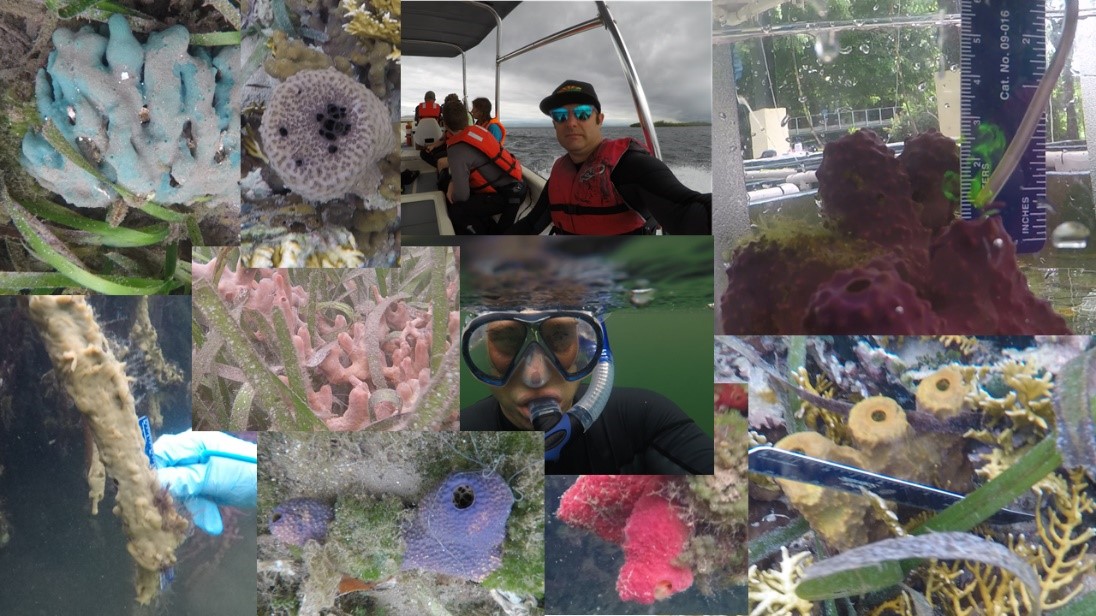 Aloha, my name is Michael Wallstrom. I am currently investigating the interactions of Porifera, Sponges and invasive macro algal mats in the disrupted ecosystem of Maunalua Bay, Oʻahu, Hawaiʻi. Maunalua Bay has seen a dramatic shift in the ecosystem due to sedimentation and submarine ground water discharge that has allowed for an invasive macro alga to dominate the benthic substrate. These algal mats have recruited a unique community of sponges; however, little is known about these sponges. Currently we are using DNA barcoding to determine whether these sponges are endemic, native, or non-native species. The results will help in understanding degraded ecosystems and their potential to facilitate native species.
Aloha, my name is Michael Wallstrom. I am currently investigating the interactions of Porifera, Sponges and invasive macro algal mats in the disrupted ecosystem of Maunalua Bay, Oʻahu, Hawaiʻi. Maunalua Bay has seen a dramatic shift in the ecosystem due to sedimentation and submarine ground water discharge that has allowed for an invasive macro alga to dominate the benthic substrate. These algal mats have recruited a unique community of sponges; however, little is known about these sponges. Currently we are using DNA barcoding to determine whether these sponges are endemic, native, or non-native species. The results will help in understanding degraded ecosystems and their potential to facilitate native species.
This past summer I participated in a course on classical taxonomy at the Smithsonian Tropical Research Institute, here is a blog post describing this amazing experience:
Training in Classical Taxonomy
The growing advances in molecular, imaging, and bioinformatics techniques cannot replace the steady loss of classical taxonomist. The Smithsonian Tropical Research Institute (STRI) offers training in tropical taxonomy, their goal is to address the growing shortage of taxonomic expertise through this program. STRI offers a series of courses aimed at preparing future scientists with the skills for taxonomic identification of six underrepresented marine organisms (sponges, tunicates, seaweeds, hydroids, sea anemones and ribbon worms) and strengthening relationships between the experts and students to foster a global network. These courses include lectures, field trips, laboratory exercises, and independent student projects; the current STRI course in progress is ‘Understanding Basal Metazoans: sponges’.
The phylum Porifera, sponges, are benthic sessile filter feeders that compose a substantial fraction of the biomass of marine environments. These organisms are critically important components of marine ecosystems and were the dominant reef builders of the Cambrian. Several studies in the past couple of decades have focused on the anthropogenic stressors on coral reefs; however, reports have suggested that sponges have seen an increase in abundance in response to coral declines. This has led spongologists to study their potential to be ‘winners’ with further global climate change.
Hawaiian coral reefs have been affected by anthropogenic stressors for several decades which has inspired a constant flux of researchers to study the anthropogenic impacts to corals; however, little is known about Hawaiian sponges and their role in the ecosystem. Preliminary investigations into a heavily disrupted reef ecosystem at Maunalua Bay show a dramatic increase in sponge communities. With further predicted global climate change, understanding sponge community’s role in the ecosystem will help conservation and management policies. As a participant in the current sponge course, I hope to bring back to Hawaii all the knowledge I have gained and apply it to these tough questions that we face in this anthropogenic era.
Michael Wallstrom My CV

